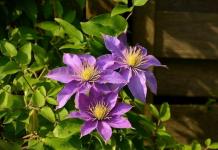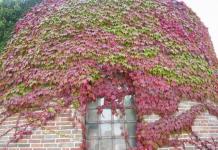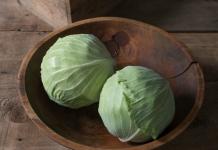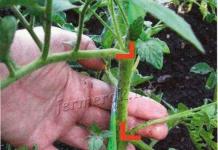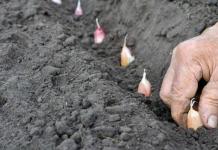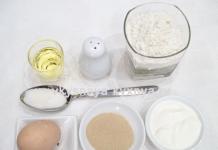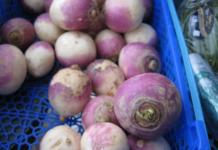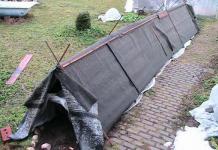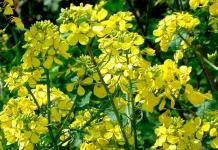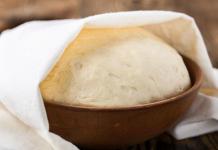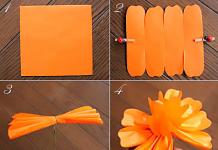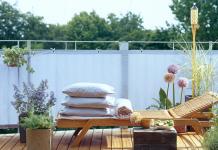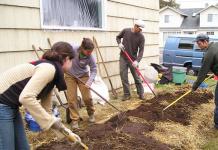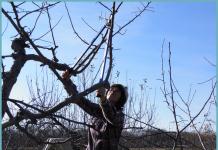In the fall, all experienced summer residents prepare their "green wards" for winter. Some plant species will not be able to survive the cold without “warm clothes and blankets” woven by their caring owners. For insulation, it is important to choose a suitable covering material for the winter. To prevent the plants from dying in the winter months, for this you need to cover them with protective agents from the cold.
When do you need a covering material?
You should not rush and cover the plants ahead of time. Covering material for the winter is harvested in September, but it is used for its intended purpose not earlier than November. Usually the plants are covered in the second half of the last autumn month. Each region has a special climate, so you need to focus on the weather.
Many novice gardeners are interested in the question, at what temperature are plants covered for the winter?
Covering material is used only with the onset of stable frosts at temperatures no higher than - 5 degrees. In warmer weather, plants can rot and rot. It is important not to miss the moment - in case of frosts from -10 degrees, plant crops freeze and die.
Video "Why cover plants for the winter"
Types of covering material
To protect plants from cold and wind, you can use both improvised means and purchased materials. All of them have their own advantages and disadvantages, and in order for the planted crops to spend the winter comfortably, it is necessary to combine heaters.
Lapnik
Shelter hydrangea for the winter with spruce branches and spunbond
Coniferous branches are perfect for winter shelter of plants. They retain heat well, delaying the ingress of snow, scaring off rodents, and in the spring they protect them from burns. In winter with little snow, spruce branches alone will not be enough to protect you from the cold. In this case, you will have to manually throw snow on the branches so that the plants do not freeze.
This hideout has 3 disadvantages:
- According to the current legislation, it is prohibited to cut branches from growing trees. In the forest, spruce branches can be collected without fear of getting a fine, only from cut trees. The best solution is to collect coniferous branches on a private plot.
- It is necessary to collect spruce branches only from healthy trees, otherwise there is a possibility of bringing diseases and pests into the garden.
- The needles oxidize the soil, so they are not suitable for all plants.
Sawdust
Sawdust and shavings are able to protect crops from frost, but they only need to mulch the soil. They, like needles, are oxidizing agents - this fact should also be taken into account in accordance with the characteristics of the plants. Before mulching the soil, the sawdust must be thoroughly dried. To prevent them from getting wet over the winter, they are covered with polyethylene on top. The disadvantage of this method is that sawdust can rot.
Leaves
Fallen leaves of trees are rightfully considered the most affordable covering material for the winter. You need to collect foliage only in dry weather; wet leaves for shelter will not work. It is best to prepare them in advance and store them under a canopy.
The deciduous covering material also has disadvantages:
- Difficulty picking - harvesting requires leaves from healthy trees, with no spots or plaque.
- Foliage alone will not be enough for the winter, as it decomposes quickly.
- If the leaves stick together from moisture, they will no longer allow oxygen to flow to the soil. To avoid this, you need to cover them on top with polyethylene.
Brushwood
Brushwood works well as a snow trap. He is not inclined to debate and is breathable. But with a small amount of snow, such a covering material for the winter will not save the plants from the cold.
Fern
You need to harvest the fern in early autumn. By this time, the leaves have already become dry, and before the onset of cold weather they need to be kept in a place protected from moisture. The fern is able to trap snow and keep plants warm in winter. To prevent it from getting saturated with moisture, insulation with polyethylene or plastic is needed on top.
Peat
With the help of peat, only the rhizome can be protected from frost; additional covering material will be required for the ground part. Peat cannot be used for every plant, as it oxidizes the soil. To insulate the roots, the soil should be mulched in the near-trunk area. During the winter, peat absorbs a lot of moisture, as a result, a hard coating is formed, so in the spring it must be stirred up in time.
Humus
Humus is not able to fully protect plants from cold weather, but thanks to it, melt water in spring will not wash out the roots. In addition, it contributes to the enrichment of the soil with useful elements. In winter, humus turns into a hard crust, therefore, during spring excavation work, it must be removed carefully, layer by layer.
Straw
Ridges with podzimny plantings and perennial flowers are covered with dry grass. Straw retains heat well, but mice and rats like to settle in it, and these mammals can cause significant damage to crops. If the winter is warm, mildew can form under the straw layer. In early spring, the straw should be removed as soon as the snow melts.
Construction Materials
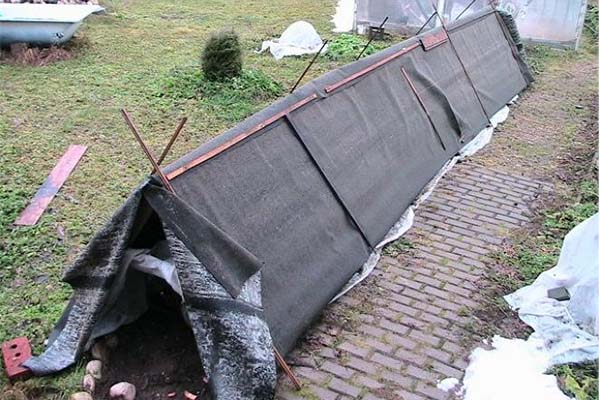
A hut for sheltering plants for the winter
If there are any debris or cuttings left from the construction site, you do not need to throw anything away - all this can be useful for warming the garden. Roofing material can be used to wrap tree trunks - it not only insulates, but also protects against rodents and pests. But do not forget - roofing material has low air permeability.
From scraps of boards, slate, you can build a "hut" for a winter night in which the "green inhabitants" of the garden will sleep. From above, such a frame is insulated with additional covering material.
Expanded clay
This material can be purchased for little cost. It combines several positive characteristics for insulation: expanded clay serves as drainage, mulch and thermal insulation. It protects the soil from excess moisture, prevents root burns in the spring months.
Polyethylene film
Polyethylene is able to protect against moisture, but in winter heat-loving plants covered with such material will freeze. Plastic wrap is best used as a moisture barrier for organic insulation. At the same time, it is necessary to open cultures from time to time in order to exclude debate.
Spunbond
This non-woven material is highly breathable, able to protect plants from the negative effects of cold temperatures and burns. With little snowy winters and severe frosts, it is necessary to combine spunbond with other heaters or apply it in several layers. It is recommended to use it on prepared frames, as it forms excessive moisture, therefore close contact with plants is undesirable. Agro-industrial manufacturers produce special spunbond products in the form of decorative caps. Such products look very extraordinary - an image of an animal is applied to them. Such caps look very cute and become a decoration of a lonely area in winter.
Sackcloth
Dense coarse fabric is used to cover the trunks of young trees, shrubs and thermophilic perennials. Burlap without a plastic wrap is not the best option for protection from the cold - it gets wet, and subsequently freezes during frost and resembles an ice dome. When choosing burlap as a covering material, you need to select not an old fabric in order to exclude the appearance of harmful microbes on the plants.
Lutrasil
This non-woven fabric is made from polypropylene. It must be combined with other covering products, since it is not able to protect plants from temperatures below -7 degrees. Lutrasil is highly breathable, transmits light well, and prevents birds and insects from harming plants.
Video "How to cover plants for the winter"
Features of the shelter in the winter of various plants
Many perennial plants can survive the winter without human intervention. They are perfectly adapted to the climatic conditions of the region and do not need covering materials. For example, lupins, astilbe, daisies, catchments, some fruit and berry plants do not need to be protected from the cold.
What plants should be covered for the winter? All young specimens planted in the current year, thermophilic perennials, exotic flowers and shrubs fall into this category.
Frost protection methods for certain plant species:
- The bushes of weigella, buddley, action should be sprinkled, sprinkled with peat or compost, and then covered with foliage and coniferous branches.
- Irises and peonies are mulched with sand, then covered with spruce branches.
- Forget-me-nots, carnations, bells are afraid of dampness, so they need polyethylene.
- Roses need a combined shelter. At first, the bushes are huddled, sprinkled with sand with a layer of 20 - 25 cm, and then with peat - by 10 cm. A frame or boxes made of boards are installed around. Spruce branches are placed on top. This method is also suitable for rhododendrons.
- For thuja, yew, juniper, you will need burlap or spandbond insulation. In this case, the branches will not fall apart with an abundance of snow, and in the spring they will not suffer from the scorching sun rays.
- For hydrangeas, you need insulation with sufficient air permeability and moisture-proof. Lutrasil performs this role perfectly, but it is used in several layers to better retain heat.
- Korean ones are pruned, leaving 5 - 10 cm. Then they need to be spud and mulched with foliage.
- Clematis is also pruned before wintering. For plants of this species, in the fall, they carry out preventive treatment against fungal diseases. Then mulch is applied to the soil, the lashes are rolled up and enveloped in spruce branches.
- also requires a "winter blanket". First, it should be pierced with a pitchfork to get oxygen into the soil. Then mulch is scattered throughout the territory.
Video "How to properly cover plants for the winter"
Healthy plants after winter
With proper use of the covering material in winter, almost all plants in the garden can be preserved. For each instance, it is necessary to select the appropriate means of protection from the cold and select the optimal time for shelter. Subject to these simple rules, careful plant care, "green pets" will comfortably survive the cold, wind and other adverse environmental factors.


